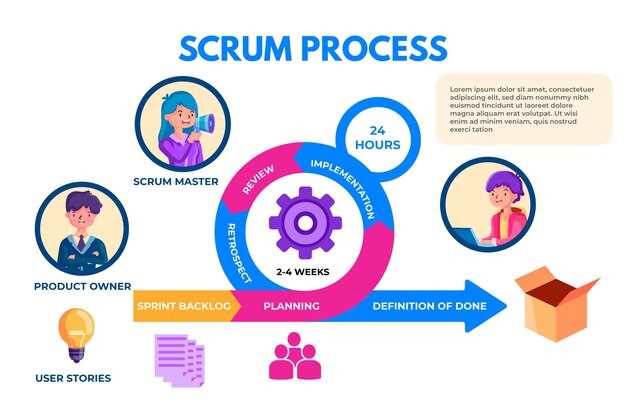Consider migrating your legacy systems to the cloud in 2025 to reduce operational costs and increase scalability. Research shows that cloud infrastructure can cut IT costs by up to 30%, providing a compelling economic case for making the shift. In addition, cloud platforms are equipped to handle rapid scaling, allowing businesses to adapt efficiently to changing demands.
A successful migration begins with a comprehensive assessment of your current IT infrastructure. Identify which components are optimal candidates for the cloud, focusing on those with high maintenance burdens or scalability challenges. This evaluation will serve as the foundation for a migration strategy that minimizes disruptions and maximizes performance gains.
Security is paramount in the cloud migration process. Opt for cloud service providers that offer robust security features, such as end-to-end encryption and constant monitoring. Data protection is a priority; check that your provider complies with the latest regulations, ensuring that sensitive information remains secure across all platforms.
Implement a phased migration approach to ensure a smooth transition. Start with non-critical applications to test the waters and refine strategies. This approach lowers risks and provides valuable lessons that can be applied to more critical systems. With careful planning and execution, businesses can leverage cloud capabilities to drive innovation and growth.
Understanding Legacy Systems and Cloud Infrastructure

Prioritize clarity in distinguishing between legacy systems and cloud infrastructure to streamline your migration process. Legacy systems often encompass outdated software and hardware solutions, making them less compatible with the demands of modern technology. These systems typically operate with rigid architectures, hindering flexibility and scalability. Maintain a detailed inventory of existing software, hardware components, and their functionalities, as this will provide a foundation for assessing what can transition to the cloud.
In contrast, cloud infrastructure offers flexibility and scalability that legacy systems lack. It allows dynamic resource allocation, enabling businesses to adjust quickly based on needs. This infrastructure supports diverse architectures, including public, private, and hybrid clouds, providing adaptability for different organizational requirements. Ensuring thorough research and evaluation of cloud service models like IaaS, PaaS, and SaaS can help in selecting the most suitable solution for migration.
Assess potential benefits such as cost savings, enhanced collaboration, and improved data accessibility when transitioning to cloud services. These improvements facilitate innovation and drive efficiency across organizational processes. Weigh risks such as compliance issues, security challenges, and potential downtime against these benefits. Implement a comprehensive risk management strategy tailored to address specific concerns identified during the assessment phase.
Documentation plays a crucial role in successfully migrating from legacy systems to cloud infrastructures. Record all decisions, processes, and configurations thoroughly to ensure a transparent and replicable transition framework. Regularly update this documentation as new insights and solutions emerge during migration.
Communication and training ensure a smooth transition by preparing your team for new operational methods. Foster a culture of continuous learning to bridge the knowledge gap between current systems and cloud operations. Encourage feedback and adapt strategies accordingly to maintain motivation and alignment with organizational goals throughout the migration journey.
Identifying Limitations of Legacy Systems
Examine the scalability constraints of your legacy systems. Often built on outdated technology, these systems struggle to handle increasing workloads typical of modern business environments. Assess database performance, application servers, and network bandwidth to pinpoint potential bottlenecks. Additionally, outdated hardware and software may not support the integration capabilities needed for seamless communication across platforms, hampering data flow and operational agility.
Evaluate the security vulnerabilities inherent in aging systems. Legacy infrastructures frequently lack contemporary security patches and updates, leaving them susceptible to modern cyber threats. Identify which components have become obsolete regarding security standards and ensure plans are in place to mitigate these risks as part of the migration process.
Survey the maintenance burden and associated costs. Legacy systems often demand specialized skillsets, leading to difficulties in staff training and retention. Analyze the financial impact of maintaining these systems compared to investing in cloud technologies, which frequently offer more cost-effective and scalable solutions through reduced hardware dependency and subscription models.
Look into the adaptability of these systems with current business processes. As organizations evolve, legacy systems may not support new workflows or emerging technologies, such as AI or IoT, limiting innovation. Conduct a gap analysis to determine where these systems fall short in meeting current and future business objectives.
Finally, assess how system performance affects user experience. If legacy systems result in slow response times or frequent downtimes, customer satisfaction and employee productivity may suffer. Initiate a performance evaluation by monitoring key metrics, such as downtime frequency and average response times, to gauge their impact on your organization’s efficiency.
Discuss common challenges businesses face with outdated technology.
First, improve efficiency by replacing legacy systems that slow down business operations. Old technology often lacks the processing power and flexibility needed for modern applications, which leads to workflow bottlenecks. Optimize your workflow by upgrading to cloud-based systems that offer higher processing capabilities and easy scalability.
Enhance security by upgrading outdated systems, which are often more vulnerable to cyberattacks. Older technology might not support the latest security protocols, leaving your data exposed to threats. Transition to cloud solutions with advanced security features like encryption and multi-factor authentication to safeguard your sensitive information.
Optimize costs by evaluating maintenance expenses. Legacy systems often require more frequent repairs and updates, resulting in escalating costs. Cloud migration can reduce these expenses by offering subscription-based pricing models, which cover maintenance and updates, allowing more predictable budgeting.
Increase innovation by moving away from technology that limits integration capabilities. Legacy systems often don’t support modern software, hindering collaboration and innovation. Cloud platforms typically offer integration with a wide array of applications, fostering innovation and collaboration across your organization.
Enhance scalability by shedding technology that fails to accommodate growth. Old systems might not efficiently support an increasing number of users or larger data volumes, restricting your business’s growth potential. Cloud solutions provide on-demand resources, ensuring your technology scales with your business needs.
Assessing Cloud Service Models for Compatibility
Identify specific needs by analyzing existing workloads and dependencies and align them with cloud service models like Infrastructure as a Service (IaaS), Platform as a Service (PaaS), and Software as a Service (SaaS). For applications requiring full control over the environment, IaaS may be the right choice, providing virtual machines and storage. In contrast, PaaS offers an environment to develop and deploy applications without managing the underlying infrastructure, suitable for teams focusing on application development rather than system administration.
Consider compliance and data governance as key factors when choosing the right model. SaaS solutions might provide pre-built compliance frameworks, making it easier to meet industry standards, while IaaS demands thorough compliance management practices by the organization itself. Evaluate these needs deeply to ensure seamless alignment with your regulatory requirements.
Assess scalability needs by evaluating how each service model supports future growth. IaaS provides scalable resources but requires more management efforts, whereas PaaS offers automated scaling options. SaaS adapts quickly to user demand, making it ideal for fluctuating workloads.
Analyze cost structure differences between models. IaaS might incur higher costs associated with resource management, while PaaS reduces these through shared infrastructure. SaaS typically operates on subscription models, facilitating predictable budgeting but possibly limiting customization opportunities.
Test compatibility through pilot programs or proof-of-concept implementations for each model under consideration. This ensures the chosen service fits both technical requirements and business processes before committing fully. Engage stakeholders across IT and business units to gather diverse insights, driving informed decisions that align with strategic objectives.
Explore IaaS, PaaS, and SaaS to determine the best fit for migration.
Choose Infrastructure as a Service (IaaS) when you need flexibility and control over computing resources during your migration. IaaS provides virtualized computing resources over the internet, allowing you to manage operating systems, storage, and deployed applications. Opt for IaaS if you wish to reduce hardware investments while maintaining control over the software environment. It suits businesses aiming to scale resources quickly and efficiently.
Platform as a Service (PaaS) is ideal if you aim to streamline the development and deployment of applications without worrying about the underlying infrastructure. PaaS offers a development environment, supporting everything from simple cloud-based applications to sophisticated cloud-enabled applications. This service model supports developers with pre-configured tools and middleware, boosting development speed and reducing time to market. It’s perfect for organizations focusing on innovation in app development.
For businesses looking to offload software management and maintenance, Software as a Service (SaaS) provides a compelling option. Access applications via the internet without any requirements to manage the infrastructure or middleware. SaaS ensures the latest software versions and automatic updates, enhancing productivity with minimal IT involvement. This is well-suited for organizations preferring subscription-based pricing models instead of upfront infrastructure investments.
Analyze your organization’s specific needs, focusing on workload types, regulatory requirements, and financial constraints to pinpoint the most practical cloud service model. Creating a hybrid strategy by mixing different service models can also yield significant advantages, allowing you to leverage the strengths of each where they are most beneficial.
Evaluating Security and Compliance Needs
Identify all applicable regulatory requirements specific to your industry, such as GDPR, HIPAA, or CCPA, and ensure your cloud provider understands these obligations. Evaluate their certifications and compliance history to ensure alignment with these standards.
- Understand your data protection obligations: Conduct a thorough audit of your current security posture, paying close attention to data categorization and classification. This helps in identifying sensitive data assets requiring additional security measures.
- Vendor Due Diligence: Scrutinize the security practices of potential cloud vendors. Request transparency about their data handling processes and inquire about recent security audits or breach responses. Check for compliance with industry standards like ISO 27001.
- Access Controls Assessment: Analyze the identity and access management (IAM) features offered by the cloud provider. Ensure they support multi-factor authentication and role-based access controls to maintain stringent security over sensitive data.
- Develop a robust incident response plan: Collaborate with your cloud provider to establish clear protocols for security incidents. This plan should include specific roles, responsibilities, and processes for timely incident detection, reporting, and resolution.
- Encryption Policies: Ensure that data is encrypted both in transit and at rest. Confirm that the cloud provider offers robust encryption methods that meet or exceed current industry standards.
- Continuous Security Monitoring: Implement ongoing security monitoring and regular audits to identify and mitigate vulnerabilities swiftly. Ensure your cloud provider offers real-time monitoring and advanced threat detection capabilities.
Regularly review and update your security policies in collaboration with your cloud provider to address emerging threats and changes in regulatory requirements. This proactive approach minimizes risks and ensures ongoing compliance.
Outline the steps to ensure data security and meet regulatory requirements during migration.
Begin with conducting a comprehensive data assessment. Identify sensitive information that requires extra safeguards and establish a clear understanding of data classification. Use this insight to develop a robust data protection strategy tailored to your organization’s needs.
Next, implement end-to-end encryption both during transit and at rest. This ensures that data remains confidential and inaccessible to unauthorized individuals throughout the migration process. Pair encryption with secure transfer protocols such as HTTPS and SFTP.
Ensure compliance with relevant regulations by performing a thorough regulatory compliance audit. Engage with legal and compliance experts to align your migration processes with standards like GDPR, HIPAA, or CCPA, depending on your industry and geographical location. Create detailed documentation to evidence compliance efforts.
Develop and enforce strict access controls. Limit data access to only those team members who absolutely require it, and utilize multi-factor authentication to enhance security. This minimizes the risk of unauthorized data exposure or mishandling.
Implement testing environments to simulate the migration process before executing it on live systems. This step allows for the identification and mitigation of potential vulnerabilities, ensuring a smoother transition with reduced security risks.
Maintain transparent communication with all stakeholders involved in the migration. Provide regular updates on progress, issues, and compliance status to foster trust and ensure alignment with organizational goals.
Finally, establish a real-time monitoring system to oversee data integrity and security throughout the migration. Utilize automated alerts to promptly address any anomalies or breaches, maintaining data safety and regulatory adherence.
Executing a Strategic Cloud Migration Plan

Identify your organization’s specific goals for moving to the cloud. Whether enhancing data accessibility, scalability, or cost-efficiency, knowing your objectives shapes a focused migration strategy. Create a detailed inventory of current applications and workflows to understand their interdependencies and technological requirements.
Map out a phased migration approach. Prioritize low-risk and non-critical systems to transfer first as a test, allowing teams to gain hands-on experience with cloud technologies. Simultaneously, modernize legacy applications for cloud compatibility to avoid lift-and-shift pitfalls that may not fully leverage cloud potential.
| Phase | Action | Objective |
|---|---|---|
| Assessment | Catalog current systems | Identify dependencies |
| Pilot Testing | Migrate non-critical systems | Validate processes |
| Optimization | Revise and optimize | Enhance performance |
Engage key stakeholders early in the process, ensuring transparent communication about anticipated outcomes and changes. This helps mitigate resistance to change, aligning all team members with the migration timeline and expectations.
Consider adopting a hybrid cloud model initially, maintaining certain data and applications on-premises to mitigate risks associated with full cloud dependence. Regularly review and adjust the migration process based on insights and challenges encountered, leveraging real-time data analytics for informed decision-making.
Invest in training and workshops for your IT personnel to build skills in cloud management and security. Bridging knowledge gaps ensures a smoother transition and empowers your team to manage the new environment effectively.
Developing a Comprehensive Migration Strategy
Start by conducting a thorough assessment of your current legacy systems. Identify which components need to be migrated, modernized, or retired. Document all dependencies and requirements to ensure nothing is overlooked.
- Define Clear Objectives: Establish specific goals such as cost savings, scalability, or disaster recovery improvements. Ensure these objectives align with your business strategy.
- Choose the Right Migration Approach: Evaluate migration strategies such as lift-and-shift, re-platforming, or refactoring. Decision should depend on your architecture, budget, and timelines.
- Prioritize Workloads: Sort workloads by complexity and business impact. Prioritize critical workloads for a more controlled and safer migration with minimal service interruptions.
- Create a Detailed Plan: Develop a step-by-step plan that includes timelines, resources, and specific tasks. Clearly outline roles and responsibilities for everyone involved.
- Assess Security and Compliance: Identify and address potential security risks. Ensure compliance with regulations like GDPR or HIPAA to avoid costly penalties.
- Estimate Costs Accurately: Calculate total costs including personnel, technology, and downtime risks. Keep a buffer for unexpected expenses.
- Engage with Stakeholders: Maintain open communication with stakeholders throughout the process. Regular updates can prevent misunderstandings and keep the project aligned with business goals.
- Monitor and Test: Implement a robust monitoring strategy. Conduct pre- and post-migration testing to ensure performance and functionality meet expectations.
- Focus on Training: Equip your team with necessary knowledge and skills to manage and maintain the new cloud environment effectively.
This strategic approach minimizes risks, controls costs, and aligns the migration process with business objectives, ensuring a successful transition to the cloud.
Detail the planning process, including resource allocation and project timelines.
Define clear objectives by listing specific tasks, desired outcomes, and measurable indicators. Establish a dedicated project management team to oversee the migration process. This team should include a project manager, cloud architects, and key stakeholders from relevant departments.
Allocate resources by identifying technical and human capital required. Assess your current infrastructure to determine what resources will transition to the cloud and which should be upgraded or replaced. Engage with cloud service providers early to understand the capabilities and limitations of their offerings, which helps in informed decision-making.
Create a detailed project timeline that outlines each phase of the migration. Break down the project into manageable stages such as assessment, planning, pilot, execution, and validation. Assign specific deadlines and responsibilities for each stage to maintain accountability.
Utilize project management tools to track progress and manage communication among dispersed team members. Tools like Asana, JIRA, or Trello are excellent for maintaining transparency and streamlining workflows.
Conduct risk assessments regularly to foresee potential obstacles and devise contingency strategies. Build flexibility into your timeline to accommodate unexpected challenges.
Ensure training and support for your staff to minimize disruptions. Organize workshops and simulations on cloud operations to enhance familiarity and confidence in using new systems.
Finally, evaluate progress through regular reviews and feedback sessions. Adapt plans and resources as necessary to improve outcomes and ensure the project remains aligned with organizational goals.
Video:
How to Migrate to the Cloud [Best Cloud Migration Strategies]
How to Migrate to the Cloud [Best Cloud Migration Strategies]
Q&A:
What are the common challenges companies face during the transition from legacy systems to cloud-based solutions?
The transition from legacy systems to cloud solutions presents several challenges. One of the primary issues is data compatibility, as older systems often store information in formats not natively supported by modern cloud services. Security is another concern, since migrating sensitive data to the cloud raises questions about data protection and compliance with regulations. Companies may also struggle with the complexity of integration, as existing systems need to work seamlessly with new cloud services. Additionally, there may be resistance to change from employees accustomed to legacy systems, which necessitates appropriate training and change management strategies.
How does the adoption of cloud computing impact operational costs for businesses still using legacy systems?
Adopting cloud computing can lead to significant cost savings for businesses transitioning from legacy systems. By migrating to the cloud, companies can reduce or eliminate the need for maintaining physical infrastructure, which includes servers, storage hardware, and the associated energy costs. The pay-as-you-go pricing model of cloud services allows businesses to scale their IT resources up or down based on demand, thereby optimizing costs. Additionally, cloud providers typically handle software updates and maintenance, which reduces the need for in-house IT personnel dedicated to these tasks, allowing employees to focus on more strategic initiatives.
What considerations should a company take into account before moving their legacy systems to the cloud?
Before moving legacy systems to the cloud, a company should conduct a thorough assessment of its current IT environment, identifying which applications are suitable for migration. It is vital to evaluate the compatibility of existing applications with cloud platforms, considering potential modifications needed for migration. Another key factor is the selection of the right cloud service model—public, private, or hybrid—that aligns with the company’s security and data management requirements. Cost analysis is crucial to estimate potential savings and understand the financial implications of migration. Also, choosing a reliable cloud provider with strong service level agreements and customer support is essential to ensure a smooth transition.
Are there specific benefits of cloud migration for businesses looking to enhance scalability?
Yes, cloud migration offers several benefits for businesses aiming to improve scalability. Cloud platforms inherently provide the ability to easily scale resources up or down, accommodating fluctuating demands without the need for significant upfront investments in hardware. This flexibility allows businesses to rapidly expand their operations or manage seasonal peaks in demand efficiently. Furthermore, cloud services facilitate global reach, enabling companies to provide consistent and reliable services to a global audience, adapting infrastructure in real-time across different regions. The automation tools provided by cloud platforms also help in scaling applications seamlessly, ensuring that businesses can grow without interruption.



